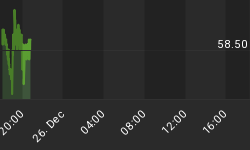The first chart is a two-year daily chart of SPX to VIX ratio (dots and right scale) with its 50-day MA (blue line) and SPX (red line and left scale). The SPX to VIX ratio rose sharply from roughly 50 in June to 140 in November. Last week, SPX to VIX fell below its 50-day MA, which may indicate at least a consolidation short-term.
Above the price chart is the VIX 21-day MA, which fell to a low level and began to rise last week, since the daily VIX rose above its 21-day MA, which is an SPX sell signal. The VIX 21-day MA (and 20-day MA) has been more accurate predicting SPX direction within two weeks than within one month or three months. The two arrows indicate SPX movements after the two prior times the SPX to VIX ratio fell below its 50-day MA and the VIX 21-day MA began to rise from low levels.
Also, above the first chart is the CPC 50-day MA, and below the price chart are the NYMO 50-day MA and daily NYSI. The relatively high CPC 50-day MA remains SPX bullish. However, the NYMO 50-day MA has been falling and normally over the second half of the fall, between zero and negative 25, a large SPX pullback takes place. The daily NYSI has flattened.
The second chart is an SPX three-month chart. At least three times since late October bearish signals were given or about to be given, but reversed course, i.e. the MACD bearish crossover, the 10-day MA about to cross below the 20-day MA, and the RSI on the verge of falling below 50. Yet, SPX continued to make higher highs and higher lows. I suspect, if SPX fails to make a higher high next week, then a fall to at least the 50-day MA, currently 1,371, will take place within two weeks.

















